
Blade Runner is a 1982 science fiction film directed by Ridley Scott, and written by Hampton Fancher and David Peoples. Starring Harrison Ford, Rutger Hauer, Sean Young, and Edward James Olmos, it is an adaptation of Philip K. Dick's 1968 novel Do Androids Dream of Electric Sheep? The film is set in a dystopian future Los Angeles of 2019, in which synthetic humans known as replicants are bio-engineered by the powerful Tyrell Corporation to work on space colonies. When a fugitive group of advanced replicants led by Roy Batty (Hauer) escapes back to Earth, burnt-out cop Rick Deckard (Ford) reluctantly agrees to hunt them down.

Do Androids Dream of Electric Sheep? is a dystopian science fiction novel by American writer Philip K. Dick, first published in 1968. The novel is set in a post-apocalyptic San Francisco, where Earth's life has been greatly damaged by a nuclear global war, leaving most animal species endangered or extinct. The main plot follows Rick Deckard, a bounty hunter who has to "retire" six escaped Nexus-6 model androids, while a secondary plot follows John Isidore, a man of sub-par IQ who aids the fugitive androids.
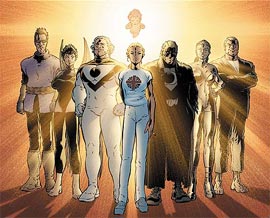
The Authority is a superhero comic book series published by DC Comics under the Wildstorm imprint. It was created in 1999 by Warren Ellis and Bryan Hitch, and follows the adventures of the Authority, a superhero team mainly composed of Ellis-created characters from Stormwatch.
Godzilla has appeared in a range of comic books that have been published in Japan and the United States.
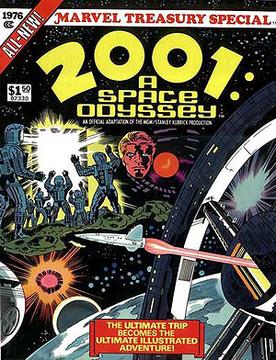
2001: A Space Odyssey is an oversized American comic book adaptation of the 1968 film of the same name as well as a ten-issue monthly series which expanded upon the concepts presented in the Stanley Kubrick film and the novel by Arthur C. Clarke. Jack Kirby wrote and pencilled both the adaptation and the series, which were published by Marvel Comics beginning in 1976. The adaptation was part of the agreement of Kirby's return to Marvel.
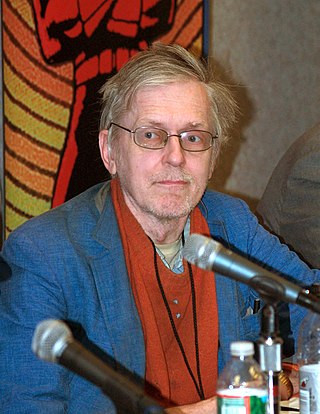
Peter Sanderson Jr. is a comic book critic and historian, as well as an instructor/lecturer in the New York area concerning the study of graphic novels/comic books as literature.

Marvel Super-Heroes is the name of several comic book series and specials published by Marvel Comics.
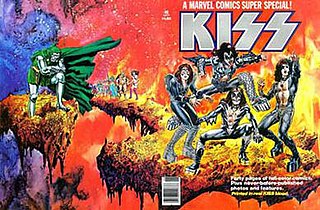
Marvel Comics Super Special was a 41-issue series of one-shot comic-magazines published by Marvel Comics from 1977 to 1986. They were cover-priced $1.50 to $2.50, while regular color comics were priced 30 cents to 60 cents, Beginning with issue #5, the series' title in its postal indicia was shortened to Marvel Super Special. Covers featured the title or a variation, including Marvel Super Special, Marvel Super Special Magazine, and Marvel Weirdworld Super Special in small type, accompanied by large logos of its respective features.
Planet of the Apes comics are tie-ins to the Planet of the Apes media franchise. They have been released by several publishers over the years and include tie-ins and spin-offs.
Blade Runner is a 1982 science fiction film directed by Ridley Scott.

Star Wars comics have been produced by various comic book publishers since the debut of the 1977 film Star Wars. Marvel Comics launched its original series in 1977, beginning with a six-issue comic adaptation of the film and running for 107 issues, including an adaptation of The Empire Strikes Back. Marvel also released an adaptation of Return of the Jedi and spin-offs based on Droids and Ewoks. A self-titled comic strip ran in American newspapers between 1979 and 1984. Blackthorne Publishing released a three-issue run of 3-D comics from 1987 to 1988.
Marvel Fireside Books were a series of full-color trade paperbacks featuring Marvel Comics stories and characters co-published by Marvel and the Simon & Schuster division Fireside Books from 1974 to 1979. The first book, 1974's Origins of Marvel Comics, was very successful, and inspired a series of annual sequels.

Fury is a 2001 six issue miniseries about Nick Fury written by Garth Ennis. The series was published under Marvels MAX imprint and featured much harder violence and explicit material than was common at the time which caused some controversy among fans and comic creators. The series takes place outside of main Marvel comics continuity and is interconnected with other series written by Garth Ennis under the Max imprint. It was followed by a prequel and a sequel.
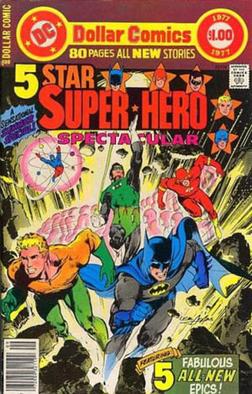
DC Special Series was an umbrella title for one-shots and special issues published by DC Comics between 1977 and 1981. Each issue featured a different character and was often in a different format than the issue before it. DC Special Series was published in four different formats: Dollar Comics, 48 page giants, digests, and treasury editions. Neither the umbrella title nor the numbering system appear on the cover; the title "DC Special Series" appeared only on the first page in the indicia. Most issues featured new material, but eight issues were reprints of previously published material.
Marvel Treasury Edition is an American comic book series published by Marvel Comics from 1974 to 1981. It usually featured reprints of previously published stories but a few issues contained new material. The series was published in an oversized 10" x 14" tabloid format and was launched with a collection of Spider-Man stories. The series concluded with the second Superman and Spider-Man intercompany crossover. Marvel also published treasuries under the titles Marvel Special Edition and Marvel Treasury Special as well as a number of one-shots.
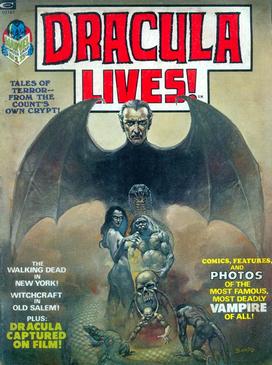
Dracula Lives! was an American black-and-white horror comics magazine published by Magazine Management, a corporate sibling of Marvel Comics. The series ran 13 issues and one Super Annual from 1973 to 1975, and starred the Marvel version of the literary vampire Dracula.

Sequart Organization is an online magazine that focuses on the study of popular culture and the promotion of comic books as an art form. Sequart also publishes books and produces documentary films. It was founded in 1996 by Dr. Julian Darius. Sequart's editor-in-chief is Mike Phillips.

Star Wars is a comic book series published by Marvel Comics from April 12, 1977 to May 27, 1986. Featuring classic Star Wars characters Luke Skywalker, Princess Leia, Han Solo, Chewbacca, C-3PO, and R2-D2, the first six issues adapt the May 1977 film Star Wars. The series chronicled their subsequent adventures for 107 issues and three annuals, including a six-issue adaptation of the 1980 sequel film The Empire Strikes Back in 1980–1981. In 2019, the series was revived for a single issue.

Dust to Dust or Do Androids Dream of Electric Sheep?: Dust to Dust is an 8 issue comic book limited series published by BOOM! Studios in 2010. The series is a prequel to the story of Do Androids Dream of Electric Sheep? The series was written by Chris Roberson and drawn by Robert Adler.
Blade Runner is an American neo-noir science fiction media franchise originating from the 1968 novel Do Androids Dream of Electric Sheep? by Philip K. Dick, about the character of Rick Deckard. The book has been adapted into several media, including films, comics, a stage play, and a radio serial. The first film adaptation was Blade Runner, directed by Ridley Scott in 1982. Although the film initially underperformed at the American box office, it became a cult classic, and has had a significant influence on science fiction. A novelization and a comic adaptation of the film were released in the same year. From 1995 to 2000, three novels serving as sequels to both Blade Runner and the original novel were written by K. W. Jeter, a friend of Dick's. A film sequel to Blade Runner, Blade Runner 2049, was released in 2017. To celebrate the 30th anniversary of Blade Runner in 2012, a short film was released, and in the lead up to the release of Blade Runner 2049, several more short films detailing events that occurred between 2019 and 2049 were released. The influence of the franchise has helped spawn the cyberpunk genre.













